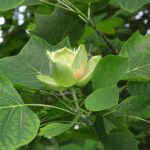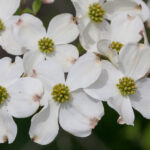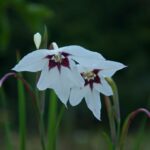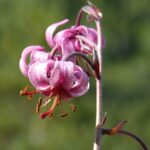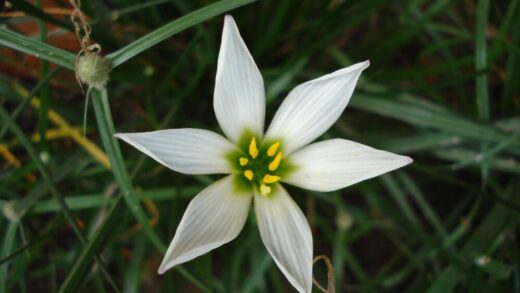Pruning and cutting back the garden star-of-bethlehem
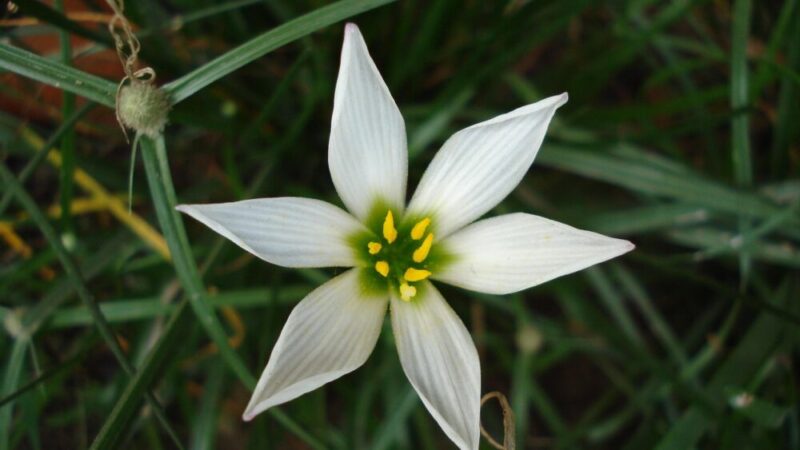
The topic of pruning the garden star-of-bethlehem is quite simple, as this plant requires very little in the way of cutting or trimming. Unlike many other garden perennials that benefit from regular deadheading, shaping, or cutting back, the care of this bulbous plant is more about knowing what not to do. The most critical rule to follow is to allow the foliage to die back naturally after the plant has finished flowering. This post-bloom period is essential for the health and future performance of the bulb. The leaves, while they may look untidy as they yellow and wither, are diligently working to photosynthesize and create the energy reserves that will be stored in the bulb to fuel the next year’s growth and flowering.
Any pruning or cutting back is generally limited to tasks of sanitation and tidiness. The primary intervention involves the removal of spent flower stalks and the eventual cleanup of the completely dormant foliage. There is no need for any kind of formative pruning to control the plant’s size or shape, as its growth habit is naturally contained and predictable. The focus is entirely on supporting the plant’s natural life cycle, ensuring it can complete its energy storage process without interruption.
Understanding the plant’s life cycle is key to its proper maintenance. It has a distinct period of active growth and flowering in the spring, followed by a necessary period of dormancy that lasts through the summer, autumn, and winter. The “pruning” practices for this plant are designed to facilitate a smooth transition between these two phases. Resisting the urge to tidy up the plant too early is the single most important aspect of its post-flowering care.
Therefore, the discussion of pruning is less about technique and more about timing. Knowing when to remove certain parts of the plant and, more importantly, when to leave it alone, will ensure your garden star-of-bethlehem remains a vigorous and reliable performer in your garden for many years. This hands-off approach makes it a wonderfully low-maintenance choice for gardeners who appreciate a plant that largely takes care of itself.
Post-flowering foliage management
After the beautiful star-shaped flowers have faded, the most crucial phase of the plant’s energy cycle begins. The green, strap-like leaves take over as the primary focus, working as miniature solar panels to capture sunlight. Through photosynthesis, they convert this light energy into chemical energy in the form of sugars, which are then transported down to the bulb for storage. This stored energy is absolutely vital, as it is what the bulb will use to survive dormancy and to produce the leaves and flowers for the following spring.
More articles on this topic
For this reason, it is imperative that you do not cut back the foliage while it is still green. Doing so would be akin to removing the batteries from a device before it has had a chance to charge. If the leaves are removed prematurely, the bulb will be deprived of the energy it needs, leading to a weakened state. A weakened bulb will likely produce a much smaller flower display the next year, or it may not flower at all, producing only a few weak leaves.
You must patiently wait for the foliage to complete its work. You will know it is finished when the leaves have turned completely yellow or brown and have started to wither and collapse. This process can take several weeks, and during this time, the patch may look somewhat untidy. One way to manage this aesthetically is to plant the garden star-of-bethlehem amongst other perennials that will begin to grow and fill in as the bulb’s foliage dies back, effectively hiding the fading leaves.
Once the leaves are fully brown and dry, they have served their purpose and can be safely removed. At this stage, they will usually pull away from the base with a gentle tug. Alternatively, you can cut them down to the ground level with pruning shears or scissors. This final cleanup is purely for aesthetic reasons and to maintain garden sanitation; it has no impact on the health of the bulb, which is now safely dormant underground.
Deadheading spent flowers
Deadheading, the practice of removing spent flowers, is a common chore for many garden plants. It is often done to prevent the plant from setting seed, thereby redirecting its energy into producing more flowers or stronger root and leaf growth. For the garden star-of-bethlehem, deadheading is an optional task and is not essential for the health of the plant. However, it can offer a few benefits.
More articles on this topic
After the individual flowers in the cluster have faded, you are left with a stalk of spent blooms. Removing this flower stalk can improve the overall appearance of the plant, keeping it looking neat and tidy. To do this, simply follow the flower stem down to the base of the plant where it emerges from the foliage and cut it off with a clean pair of shears or snips. This prevents the plant from expending a small amount of energy on developing seeds.
While preventing seed formation can theoretically conserve energy for the bulb, the impact is generally minimal for this plant. The garden star-of-bethlehem primarily propagates and spreads through the production of offset bulbs rather than by seed. Therefore, allowing it to set seed will not significantly diminish the bulb’s energy stores. In fact, if you wish to try propagating the plant from seed or want to encourage it to naturalize in a meadow setting, you should leave the flower stalks intact and allow the seeds to mature and disperse naturally.
Ultimately, the decision to deadhead is a personal one based on your gardening goals and aesthetic preferences. If you prefer a meticulously maintained look in your formal borders, then removing the spent flower stalks is a good idea. If you have a more naturalistic garden design or are short on time, you can safely skip this step without any detriment to the long-term health or performance of your garden star-of-bethlehem plants. The crucial part of post-flowering care remains the management of the foliage, not the flower stalks.
Managing the plant in lawns
The garden star-of-bethlehem is a popular choice for naturalizing in lawns, where it can create a beautiful, star-dusted effect in the spring. However, managing it in this setting requires a specific approach to mowing that respects the plant’s life cycle. The same principle that applies to garden beds holds true for lawns: the foliage must be allowed to die back naturally after flowering to replenish the bulb’s energy reserves for the following year.
This means you must refrain from mowing the area where the bulbs are planted for a significant period after they have finished blooming. Typically, you will need to wait about six weeks after the last flowers fade before it is safe to mow. Mowing too early will cut down the green leaves, effectively starving the bulb and leading to a rapid decline in the population over just a season or two. This period of waiting for the foliage to yellow is the most important factor for long-term success.
To manage this, you can plan to have a “no-mow” area in your lawn during the spring. This works particularly well for informal lawns or specific sections that you can designate as a spring meadow. You can mow pathways through the area or mow around the patch of bulbs, creating an island of longer grass. This can create an attractive, meadow-like feature in your landscape.
Once the foliage has completely yellowed and withered, you can resume your normal mowing schedule for that part of the lawn. The dormant bulbs will be completely unharmed by the lawnmower passing over them. This patient approach allows you to enjoy the beauty of a naturalized bulb display in your lawn while ensuring that the plants have the opportunity to perenniate and multiply, creating an even more impressive display with each passing year.







